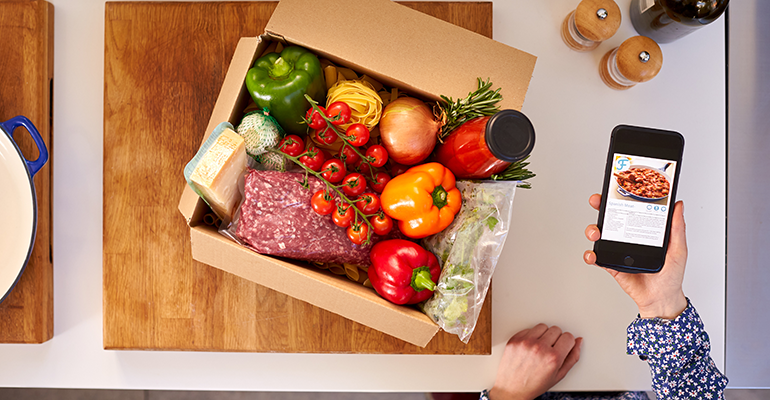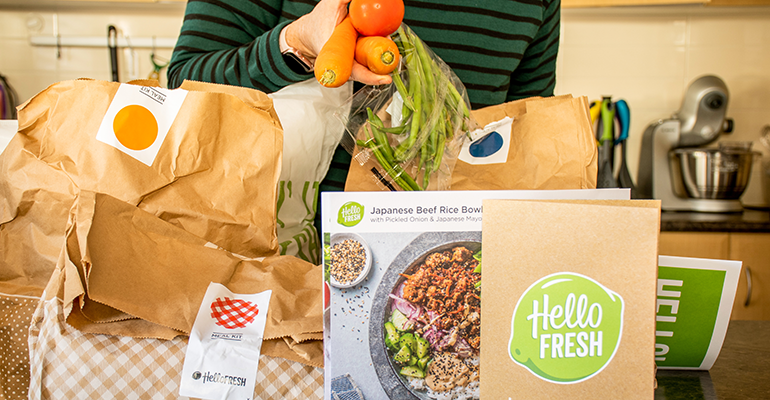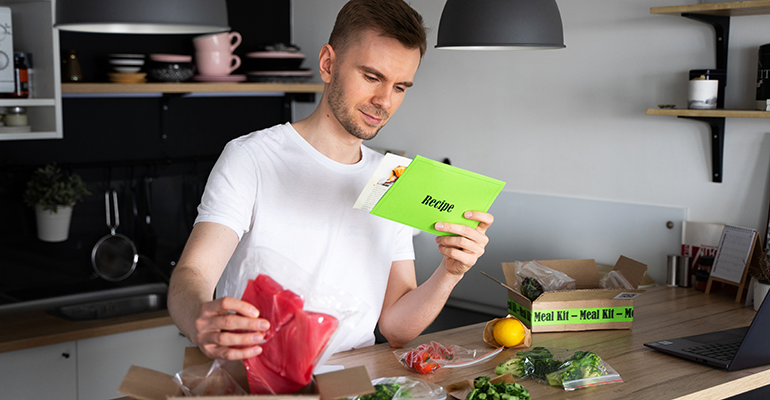News
Meal kits are on the rise globally, says Euromonitor
22 Aug 2023Demand for meal kits is growing globally, according to Euromonitor, with some brands offering affordable options and others developing more premium, personalised products.
The meal kit segment is one of the fastest-growing categories in today’s food and beverage industry, market research company Euromonitor International revealed in its June 2023 insights.

In 2022, the global meal kit segment saw 13% value growth and amassed global sales of $14 billion (€12.9 bn), partly due to consumers’ busy lifestyles and cooking fatigue prompting convenient at-home options. The burgeoning market is one of the few food and beverage categories to increase in volume and value worldwide.
Curating the restaurant-at-home experience
With the congruence of hybrid lifestyles, the cost-of-living crisis and interesting novel and varied recipes, consumers opt for meal kits. They provide at-home convenience via fresh and chilled produce, affordability, and unique food experiences.
Meal kits fill the consumer gap for convenience and experience, garnering a reputation as a premium food and beverage offering in a retail setting without the price tag. As a result, post-pandemic consumers are tapping into the segment’s affordability and value-based reputation.
The leading names in meal kits are responding by reinventing their new product pipelines to include appealing flavours, exciting ingredients and trend-led recipes.
Global growth
Meal kits’ popularity is worldwide. However, some geographical areas show specific potential in the growing food and beverage category.
In Europe, researchers Euromonitor International anticipate Spain and Italy will see marked growth in the meal kits space. Though this is expected to come from a smaller base than other notable markets such as the US and Canada. Forecasts predict these North American markets will come out on top for meal kits, leveraging opportunities to increase their presence through the forecast period of 2022 to 2027.
Predictions indicate that Australasia will showcase the highest per capita levels for meal kits worldwide, opening up the opportunity to share and support other markets. Australia and New Zealand are signposted as strong markets to watch for meal kit performance through the forecast period to 2027.
In June 2021, Euromonitor International reported the e-commerce share of food and beverage exceeded 10% in 2020, up from 3% in 2015. Retail and food service lines subsequently overlap, emphasising delivering experiences that reflect consumer needs rather than using a specific and traditional format.
 © AdobeStock/Daria Nipot
© AdobeStock/Daria Nipot
Growing a competitive advantage
Home Chef, Yoshike!, Blue Apron and Gousto are among the top five meal kit companies around the globe in 2022. However, the leading name in meal kits is HelloFresh, which Euromonitor Intelligence calls the segment’s “unrivalled champion”, dominating meal kits with almost half (49.9%) of the total market share in 2022. Home Chief, the second largest meal kit provider, comes in second, with a fifth of the market (10.0%).
Since the Covid-19 pandemic, the UK’s recipe box provider has seen a rise in sales amid increasing consumer acceptance and uptake of meal kits and increased sales per household. HelloFresh overcame industry hurdles like supply and cost access by growing its supplier network and opening European and North American fulfilment sites in the UK, Germany and Canada. As a result, the meal kit provider navigated issues, including increased transport and raw material costs.
In August 2023, the meal kit producer announced the launch of its ready-to-eat (RTE) brand, Factor, in Europe, aimed at reaching out to a broader consumer base. The meal kit leader will continue to prioritise building engagement with new customers and encourage old customers to return through cross-selling strategies. The brand will also build its e-commerce presence by utilising digital market strategies such as social media channels, influencer relationships, data analysis, and search engine optimisation (SEO).
Time for a new meal kit era?
Polarisation dominates in today’s meal kit landscape. Consumers are looking for affordable and easily accessible options amid the cost-of-living crisis and ongoing inflationary pressures. Simultaneously, shoppers also want personalised meal kits targeted to their preferences to obtain a premium at-home dining experience.
Ultimately, consumers want meal kits to sit above the regular daily at-home eating experience while achieving the same level of convenience but below the cost of typical food service outlets. Meal kit providers competing with direct-to-consumer (DTC) models are implementing more novel retail strategies to achieve affordability. Co-branded meal kit offerings allow brands to reach out to wider audiences.
In September 2022, for example, Home Chef collaborated with a TV chef, Rachael Ray, to release a meal kit. Options that position affordability as a priority are also proving popular. In New Zealand, a non-profit initiative, Feed My Flat, provides accessible, low-price meal kits to students weekly, opening up the segment to consumers who previously were only presented with kits at higher prices.
 © AdobeStock/Garnar
© AdobeStock/Garnar
Food developers are also creating premium personalised meal kits that target specific consumer markets and dietary preferences, such as vegan, gluten-free, or organic options. In February 2022, CrossFit teamed up with US Trifecta Nutrition, a meal kit brand focusing on fitness, to reach consumers following health-conscious diets such as keto, paleo and clean eating. Australia’s Go! Kidz curates child-friendly meals, striving to provide highly nutritious, easy and efficient to prepare and clean labelled meals.
Moving forward, meal kit providers will seek out broader consumer bases to meet affordability needs while pursuing those that are also personalised and targeted to specific needs, reflecting convenience and experiential eating demands.